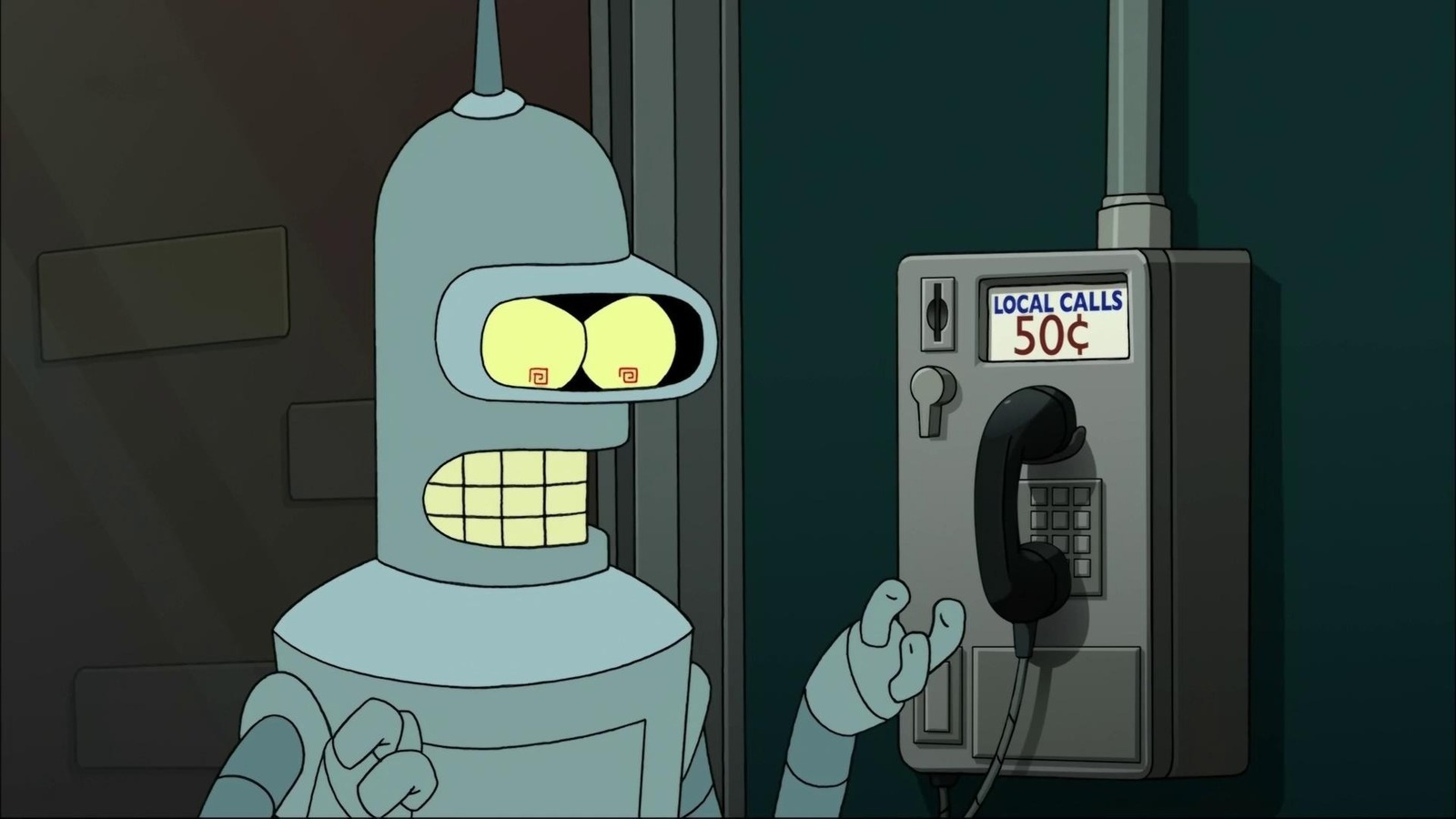Cohen asked Moore and Vanzo what the animation challenges were for Bender’s moving mouth, and Moore recalled the early mouth design. “We tried doing a test,” Moore said, “where his mouth just lit up when he talked to the syllables.” Groening wondered why that design was abandoned, asking if it merely didn’t look good. Cohen pointed out that a light-up mouth is indeed less aggressive. A viewer might note that many of the robots on “Futurama” do indeed have light-up mouth panels, while only a few have quivering “speaker” mouths like Bender.
Seeing as Bender is shaped like a large, metallic can, sports an old-fashioned antenna, and can only turn his head left and right, this author pictures him to be made of old-fashioned materials. He’s a conscious robot capable of amazing strength, but could still be assembled in a garage on the weekends, provided one had the tools and the wherewithal. As such, Bender’s mouth isn’t so much a high-tech TV screen with lines on it so much as it is a 1970s stereo speaker. Likewise, his eyeballs are fragile like light bulbs, and his body is a mere plate of not-at-all-lightweight steel.
Of course, the actual technological functioning of Bender is not important to “Futurama.” This isn’t “Star Trek,” which feels the need to explain its technology using delicious multisyllabic word salads. “Futurama” is a comedy. Bender is a robot. He drinks too much booze and is a kleptomaniac. If it’s funny, then it’s game. How his mouth works is more an animation concern than a matter of robotics.

